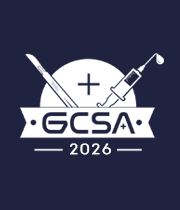Minimally Invasive and Laparoscopic Surgery
Surgeons today are continually striving for techniques that promote rapid recovery, minimal scarring, and lower complication rates. Among the most impactful advancements are those seen in minimally invasive and laparoscopic surgery, where smaller incisions paired with high-definition visualization tools enable unparalleled access to internal anatomy. These methods have not only reduced postoperative pain and hospital stays but have also broadened the surgical options available to patients with comorbidities. Innovations in instrumentation, such as articulating laparoscopic tools and miniaturized cameras, offer refined dexterity in confined spaces. As surgical curricula increasingly emphasize laparoscopic proficiencies, the global shift toward minimally invasive procedures continues to accelerate. The cumulative benefit lies in enhanced patient satisfaction, optimized resource use, and scalable surgical care delivery across diverse healthcare settings.



Title : Spontaneous colonic perforation in a pediatric patient with acute febrile lllness: A case report
Abhiraj Yadav, Manipal College of Medical Sciences, Nepal
Title : Unusual cause of small bowel obstructions in infants: A warning letter to parents
Gamal Al Saied, Al-Azhar University, Egypt
Title : From panic to protocol: A ?IP on developing a paediatric breast referral pathway
Neriah Mangion, University Hospital Sussex NHS Foundation Trust , United Kingdom
Title : Improving scrotal examination in male patients presenting with acute abdominal pain: An audit and quality improvement intervention
Maab Elsaddig, University Hospital Lewisham, United Kingdom
Title : Mapping pediatric general surgery training in low and middle income countries: A scoping review
Habba Mahal, University of Alberta, Canada
Title : Improving implementation of enhanced recovery after cesarean section protocol in resource limited setting of Koidu Government Hospital Sierra Leone 2024/25. A quality improvement project from evidence to reality
Hailemariam Getachew, PIH, Sierra Leone